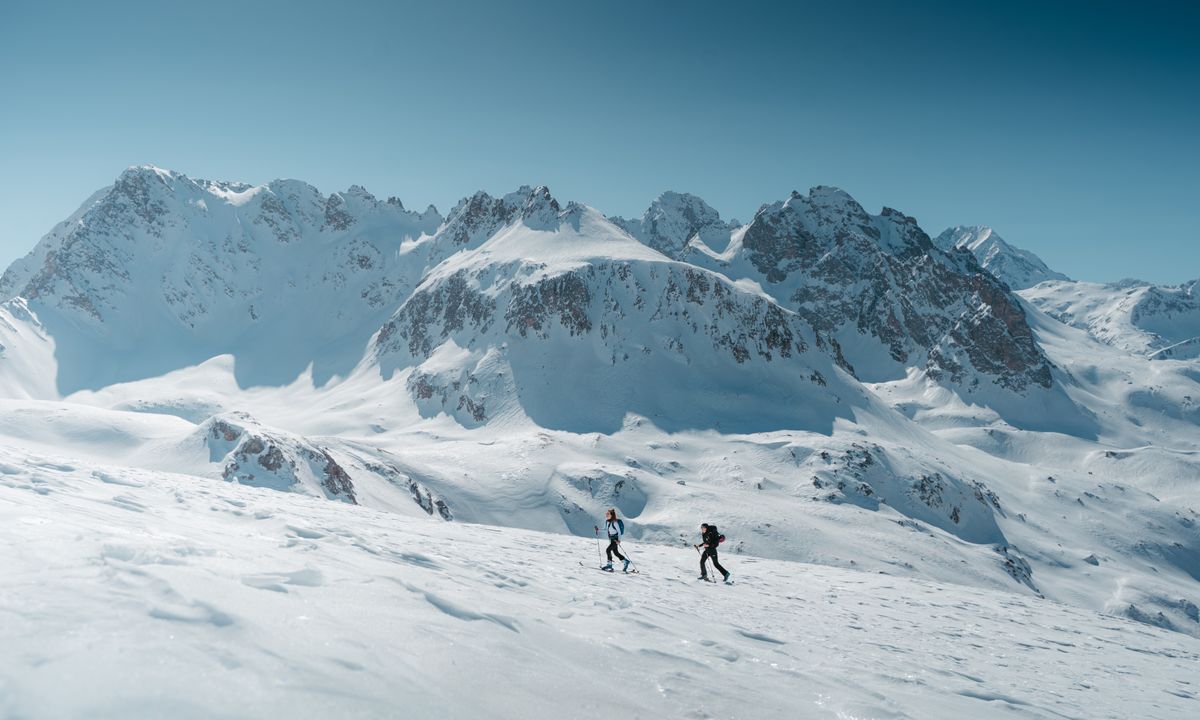Off-piste skiing : 3 safety rules you must follow
Publié le 10/10/2023 - Rédigé par Marie
Fascinating and attractive, off-piste skiing attracts many thrill-seekers every year.
But if powder snow promises an unparalleled sliding experience and breathtaking untouched landscapes, it's essential to know the 3 essential safety rules for this discipline.
But if powder snow promises an unparalleled sliding experience and breathtaking untouched landscapes, it's essential to know the 3 essential safety rules for this discipline.
1/ Knowing the terrain and avalanche conditions
Although the call of the powder may be irresistible, it's imperative to find out about the terrain you want to ski or snowboard beforehand. Without the usual structures and safety markers, the first risk would be to get lost or endanger yourself in an area known to be unstable.
You should also consult the avalanche bulletin to check the conditions of your chosen terrain. In this way, you can find out what alert levels have been announced, as well as the most dangerous places to avoid.
With the help of magazines or dedicated applications, we invite you to draw up and follow a precise itinerary for an experience in the best possible conditions.
If you've never been off-piste before, esf Courchevel offers off-piste safety courses. With an experienced instructor, you'll learn about the equipment you need and the rules you need to follow to get off the beaten track in the mountains.
You should also consult the avalanche bulletin to check the conditions of your chosen terrain. In this way, you can find out what alert levels have been announced, as well as the most dangerous places to avoid.
With the help of magazines or dedicated applications, we invite you to draw up and follow a precise itinerary for an experience in the best possible conditions.
If you've never been off-piste before, esf Courchevel offers off-piste safety courses. With an experienced instructor, you'll learn about the equipment you need and the rules you need to follow to get off the beaten track in the mountains.
 Sensation and serenity with the esf safety course!
Sensation and serenity with the esf safety course!2/ Have the appropriate safety equipment
When skiing off-piste, there are a number of essential safety features.
The Avalanche Beacon
The Avalanche Beacon emits a signal at regular intervals in "transmit" mode, and locates a buried person in "search" mode. This type of device should be worn on your body, not in your backpack, as it could quickly be carried off in another direction during an avalanche.
Shovel and avalanche probe
When a victim is buried under snow, his or her survival time is limited. That's why shovels and avalanche probes are an integral part of off-piste safety equipment. Once you've located the victim with the avalanche transceiver, you can use the probe to determine the depth at which he or she lies, and quickly remove the snow with a suitable shovel.
You'll also need a first-aid kit and a charged cell phone to alert the emergency services and provide first aid in the event of an accident.
REMINDER: The European emergency number is 112.
You'll also need a first-aid kit and a charged cell phone to alert the emergency services and provide first aid in the event of an accident.
REMINDER: The European emergency number is 112.

3/ Never ski off-piste on your own
Last but not least, off-piste skiing should never be done alone. If you do, you'll be depriving yourself of close and vital help in the event of an avalanche, broken equipment or injury.
If you're experienced enough to explore off-piste areas on your own, it's a good idea to have experienced riders by your side.
On the other hand, if you're just starting out in this freeride discipline, it's highly recommended that you take lessons with an experienced instructor. His or her perfect knowledge of the terrain and skills will be a sure-fire way of introducing you to this new off-piste activity in complete safety.
If you're experienced enough to explore off-piste areas on your own, it's a good idea to have experienced riders by your side.
On the other hand, if you're just starting out in this freeride discipline, it's highly recommended that you take lessons with an experienced instructor. His or her perfect knowledge of the terrain and skills will be a sure-fire way of introducing you to this new off-piste activity in complete safety.
 Discover off-piste skiing with an esf instructor !
Discover off-piste skiing with an esf instructor !